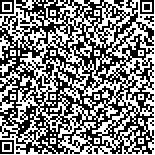| 摘要: |
| [目的]甘蔗种植业是云南边境地区农业经济发展的重要产业,应用遥感方法研究甘蔗产区种植时空变化为地方农业部门及农户合理种植决策提供信息服务。[方法]文章以云南省德宏州及部分缅甸境内的甘蔗产区为研究区,使用2013—2017年卫星多光谱影像和极大似然分类提取甘蔗种植空间信息,通过公里网格统计分析时空变化特征。[结果](1)2013—2017年云南边境甘蔗产区面积总体呈减少趋势, 2017年较2013年总体减少约14%; (2)境内境外甘蔗种植的空间变化特征存在较为明显差异,其中境内甘蔗种植在72%的网格内稳定,在20%的网格内减少,在8%的网格内增加,面积减少的网格主要分布于河流沿线的冲积小平原,并呈集中连片状; 境外甘蔗种植在68%的网格内稳定, 17%的网格内减少, 15%的网格内增加,面积增加与减少的网格数量相当,空间变化特征不明显。[结论]遥感方法可准确分析该区域甘蔗种植时空变化,结果可为云南边境地区甘蔗种植业优化调整与可持续发展提供参考。 |
| 关键词: 甘蔗产区遥感边境空间信息 |
| DOI: |
| 分类号:S127 |
| 基金项目:云南省科技计划项目“云南主要农作物遥感监测初步构建”(2018BB02907); 四川省财政创新能力提升工程青年基金项目“基于空、地一体化遥感的水稻参数精确采集技术研究”(2016QNJJ 023); 四川省应用基础研究面上项目“基于互联网+多阶段遥感反演的区域水稻参数逐地块监测技术研究”(2017JY0284) |
|
| SPATIAL TEMPORAL VARIATION OF SUGARCANE PLANTING REGION IN THE CHINA MYANMAR BORDER |
|
Dong Xiuchun, Li Zongnan, Huang Ping, Jiang Yi, Ren Guoye, Liu Ke
|
|
Institute of Remote Sensing Application,Sichuan Academy of Agricultural Sciences,Chengdu, Sichuan 610066,China
|
| Abstract: |
| The sugarcane cultivation industry plays an important role in agricultural economic development in the border areas of Yunnan. In this paper, the spatial temporal variation of sugarcane planting region was studied by remote sensing techniques, which could provide some related information services to help local farmers and the agricultural sector make reasonable planting strategies. First of all, the sugarcane planting region located in the border region of Yunnan and Myanmar was selected as the study area. Secondly, the spatial information of sugarcane planting was extracted from 2013 to 2017 Landsat 8 OLI images based on maximum likelihood supervised classification. Finally, the trend of sugarcane planting acreage changes and the characteristics of spatial temporal variation were analyzed by 1 km grid. The results showed that: (1) The acreage of sugarcane planting in this study area generally showed a decreased trend, dropping by 14.06% from 2013 to 2017. This trend of acreage reduction remained stable before 2016, while slightly climbed after that. (2) The characteristic of sugarcane planting spatial variation in China was obviously different from in Myanmar by spatial grid analysis. In China, the acreage of sugarcane planting was unchanged within 72% of grids, decreased within 20% of grids, and increased within 8% of grids. Among that, reduced area grids were mainly distributed in the alluvial plains along the river, and were concentrated and continuous. In Myanmar, the acreage of sugarcane planting remained steady within around 68% of grids, decreased within 17% of grids, and increased within 15% of grids. The degree of increase and decrease in this aboard area was almost equivalent to the number of grids, whose spatial variation characteristics were also not obvious. In conclusion, the information of spatial temporal variation about sugarcane planting can be effectively obtained by remote sensing, which can provide reference for the optimization and sustainable development of sugarcane cultivation in the border areas of Yunnan. |
| Key words: sugarcane planting region remote sensing the border region spatial information |

